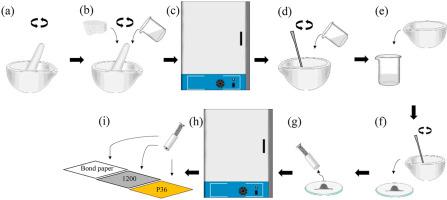Talanta ( IF 5.6 ) Pub Date : 2020-10-15 , DOI: 10.1016/j.talanta.2020.121780 Andrei M. Surkov , Rodrigo G. Queiroz , Rafael S. Rinco , Alejandro G. Rios , Ivano G.R. Gutz , Alexandre L.B. Baccaro , Lúcio Angnes

|
A new composite electrode (G-PSE) was developed from graphite powder and expanded polystyrene (EPS, Styrofoam) by simply dissolving the foam in chloroform, incorporating the graphite particles under mixing and volatilizing the solvent at 80 °C. The resulting rigid black composite can be softened with acetone and so it can easily be molded to any shape, e.g., into a PTFE tube with an electric contact, to build the electrode. A 75% graphite content (w/w) was found appropriate for preparing the G-PSE with a working potential similar to that of carbon paste electrodes, superior mechanical stability and a much faster response to ferrocyanide, close to reversible and similar to that of the much more expensive glassy carbon electrode. Applications of the G-PSE to dipyrone and paracetamol quantification in pharmaceutical formulations were demonstrated. The results accomplished by flow injection analysis with amperometric detection at the G-PSE were successfully validated against standards methods.
中文翻译:

具有增强的电化学和电分析性能的石墨-聚苯乙烯复合材料
通过将泡沫简单地溶解在氯仿中,在混合下掺入石墨颗粒并在80°C下挥发掉溶剂,由石墨粉和膨胀聚苯乙烯(EPS,聚苯乙烯泡沫塑料)开发了一种新的复合电极(G-PSE)。所得的硬质黑色复合材料可用丙酮软化,因此可以轻松地模制成任何形状,例如,制成带电触点的PTFE管,以构建电极。已发现75%的石墨含量(w / w)适合于制备G-PSE,其工作电位类似于碳糊电极,具有优异的机械稳定性和对亚铁氰化物的更快响应,接近可逆且类似于更昂贵的玻璃碳电极。证明了G-PSE在药物制剂中对双嘧啶和扑热息痛定量分析的应用。











































 京公网安备 11010802027423号
京公网安备 11010802027423号